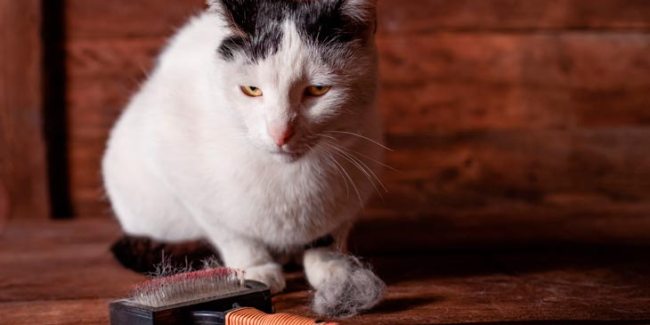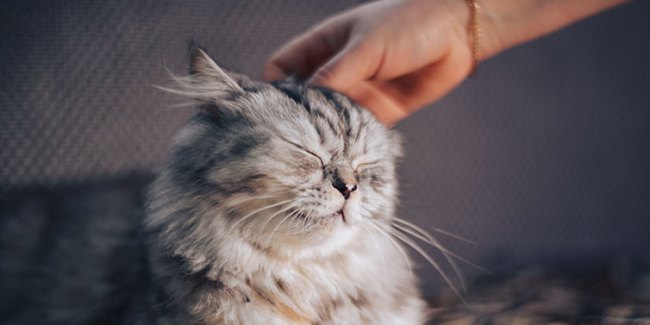Driving with Pets

What Usually Happens…
We love our pets so much and we want to take them wherever we go. Right? For many of us pet parents, this is certainly true. So we bundle Dogzilla into the car, who loves to ‘ride shotgun’ in the front passenger seat, we ensure that we and our human passengers (in the back seat) are all safely buckled-up, and off we go.
On the way, we hit a couple of potholes (of course) and Dogzilla is propelled onto the floor, or onto us; we slam on brakes and our pooch is flung against the dashboard. We park at the shopping centre and we all pile out… except for Dogzilla, who isn’t allowed into the shops. No problem. We have made sure that the car is parked in the shade and we open a couple of windows a few centimetres.
“Won’t be long, Zilla,” we assure him and off we go.
We fully intend to nip in and out of the shops, but while we’re there we realise we need a few more things and then we bump into an old friend and have a quick chat, which extends to twenty minutes.
So many well-intentioned pet owners subject their animals to potential injury, suffering, illness and even death, for the sake of enjoying their company on a trip. Read on to discover the possible dangers and of ways to keep your furry friends, and you, safe and comfortable on any car journey.

What Should Have Happened …
Let’s have a look at what the law says:
Rules in South Africa
Whilst the laws governing driving with animals in vehicles are not as stringent as in many other countries, there are regulations which apply. To summarise:
No driver on a public road should permit any person, object or animal from preventing the driver from having full control over the vehicle. (Reg 30 c)
Your cute little Yorkie could climb underneath the control pedals of your car.
Your spaniel could jump onto your lap.
Securing Your Pet in the Car

Dogzilla’s mom or dad should, of course, have ensured that he was safely secured in the back of the car, for his own protection, for the safety of everyone in the car and others on the road.
A restrained animal is less likely to be severely injured in an accident. Just like humans, serious injuries are often caused by being flung about in the car, being thrown through the windscreen or from being thrown out of the car.
Restraining your pet is also important for the aftermath of an accident. Shocked animals will panic and their instinct is to run away. An animal, possibly injured, leaping through an open window, may be hit by another car, get lost or cause another accident.
Always ensure that your pet is microchipped by your vet, which means he/she can be identified if lost and will be reunited with you as quickly as possible.
Whichever form of restraint you choose, we recommend that you purchase the best and sturdiest that you can afford. Flimsy restraints will provide little protection and may not last as long as those which are well made from the best materials.
There are several ways of restraining your dog within your car. (Kitty parents, don’t worry. We’ll get to you in a minute.)
- Harnesses
Dog harnesses have a strap which is easily attached to the seat belt in the car. A full-body harness limits movement and provides security for your pooch and for you. Some harnesses are padded to ensure the utmost comfort.
For more active and younger dogs, a zipline harness uses a standard dog harness but it is attached to a short length of leash, giving your dog a small run in the back of your car.
Harnesses can be purchased online or from pet stores, from around R500.
A safety lead, which may not be as comfortable as a harness, will cost less than R200.
- Barriers
These barriers effectively separate the back seat area from the front. Most barriers are attached behind the front car seats and may also be attached to the roof. They protect pets in cars from being thrown forward in the event of sharp braking or an accident.
Look for adjustable barriers which will fit just about any car, and which have a sturdy steel frame. Some consist of three cage-type panels which can easily be adjusted to fit the car. Others consist of a mesh net barrier with a metal frame.
Prices of barriers range considerably, but you should expect to pay from R1,000 for one which is effective and which will last.
- Crates and Carriers
Crates and carriers can be safe and protective places for your pet if properly secured to your car. These may be the soft-sided type which are mainly made of fabric or the ‘impact-safe’ type which are sturdier and built to protect your pet, and you.
The impact-safe crate uses energy-absorbing materials and is specifically designed to withstand certain levels of impact. They are the highest-rated safety systems for pet travel and are more expensive than more basic types of carrier, but they are a good investment particularly if you travel frequently with your furry friend.
Cats in Cars

Now a word about our feline friends and car trips. Let’s face it, kitty parents will know that their babes are territorial and not too keen on leaving their home patch. Nervous and shy felines will usually prefer to stay at home but those who are more relaxed and are closely bonded with their human parents, may be more likely to accept the odd trip or two.
What you absolutely do not want is a kitty loose in your car, who is not too pleased about travelling. The very idea of those talons attached to a ball of fury while you are driving is enough to persuade you to stay at home, or at least to leave Catzilla at home.
Obviously, most self-respecting cats will object to a harness. If you don’t get shredded when attaching kitty to the harness, you’ll shed blood when removing it. So … never take Fluffy on a car journey without a carrier.
The carrier should be large enough for Catzilla to lie down and to stand up comfortably. We suggest you prepare at home by putting a cushion or folded blankie inside with some treats. Leave the carrier on the floor and you may find that kitty enters the box voluntarily.
Try closing and opening the door, increasing the time your moggy is inside. Reward with treats every time he/she complies. Carry the crate/carrier around until Madame/Monsieur is used to the movement.
Secure the carrier/crate in the car. For example, you could strap the box in place or you could wedge it in place on the floor of the car, between the front and back seats. Make short trips at first, increasing the length until your moggy is (fairly) happy with the situation.

Pets Left in Vehicles
Hundreds of pets (dogs and cats) die each year from heat exhaustion after they have been left in cars. Parking in the shade and cracking the windows, experts tell us, make little difference.
Research has shown that a car parked in the shade on a hot day, after 1 hour, reaches a temperature of 38°. A car parked in the sun on a hot day can reach a temperature of 47°.
Who hasn’t returned to their car, parked in the sun, to find that they gasp at the rush of heat when they open the door and cannot touch the steering wheel?
Imagine being a pet, or a child, locked inside this car while mom or dad goes to the shops for even just half-an-hour? Apart from the suffering and panic, heatstroke can set in very quickly, which can cause brain damage, internal injuries and can be deadly.
Tips for Travelling with Your Furry Friend

- Start getting your pet used to the car from an early age. This can be done as part of their socialization. Get puppy/kitty used to the carrier/crate or restraining system you have chosen, in the house first. Let them sit in the parked car with you and then start making short trips. Use treats to make it fun.
- Try to travel in the early morning or evening when it’s cooler (and the roads are quieter).
- Don’t feed poochie/kitty right before a car trip. Give them time to digest a meal. If they do get car sick, your vet may give you medication for this. Many pets grow out of car sickness as they mature.
- Always take plenty of water and a bowl with you in the car.
- You may be able to drive for hours without a break. Your pooch cannot. Dogs need to stretch their legs after an hour or so and have a drink and a toilet break.
- Try to keep your car as cool as possible. Your pet, in his/her fur coat, will feel the heat before you do, so switch the aircon on, but not too high. Check that the back seat or boot areas are cool – sometimes the aircon doesn’t always reach these areas. Remove the parcel shelf.
- When you park, take your pet out of the car as soon as possible. Never leave him/her alone in the car, even for a minute.
And finally …
We wish you and your furry friends, happy and safe travelling!
ZA-BRV-230200003
Subscribe to our Newsletter
Get to know your furry friend better! Sign up for all things dog- or cat-related.
The Hairy Facts about the dreaded hairball
12 April 2021
Help! My dog’s barking mad! Volume 2
12 April 2021
Your Itchy, Scratchy Cat – All About Cat Skin Problems
12 April 2021
The Dog’s Diet: A Bone of contention?
01 April 2021
Mango Fly Worms: How to Spot and Eliminate them
Posted on November 28,2019
Managing Mange And Mites In Your Dog
Posted on June 11,2018
Why Do Cats Purr and How? Learn What Your Cat Is Saying
Posted on October 14,2020
How to Get Rid of Ear Mites in Dogs
Posted on November 06,2019









